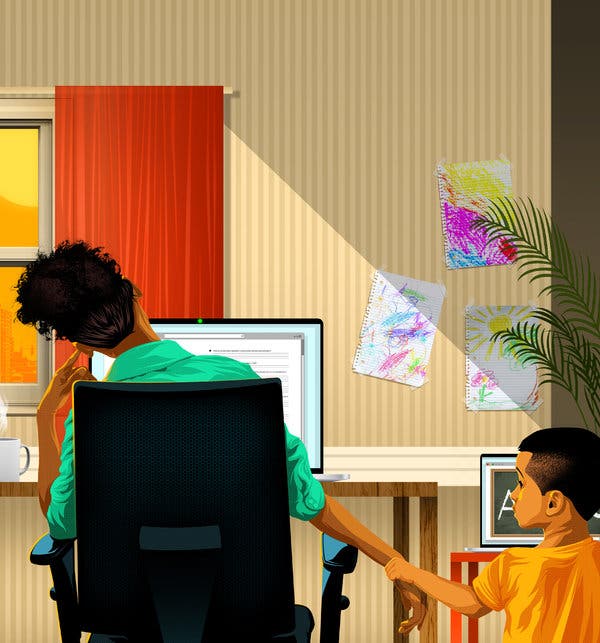
In the mornings you would send your child off to school and you would go to work, you got your children ready for school and you would tuck them in at night for bedtime. In the matter of days families had to adapt to a new stressor which was the COVID-19 pandemic. COVID-19 caused schools to close and children were now stuck at home which changed a lot of family’s routines. Parents now had to stay home with their children and help them with virtual learning to get their education. Virtual learning is where instead of being in a classroom, you are stuck learning from an electronic device at home.

Zoom, which is now known to many parents, teachers, professors, and students is being used in the midst of the pandemic. Zoom is an online video chat where a number of students can join to get their education. The picture above is an example of what zoom is like and what is now, a new normal for many. Teachers or professors will send a link to the online classroom where the student will meet their teacher or professor including many other students in their classes. While zoom started as a new tool for learning many experience problems with the online third-party website. For example, many low-income family’s now face issues with using virtual learning, “In a 2018 Center survey, about one-in-five teens ages 13 to 17 (17%) said they are often or sometimes unable to complete homework assignments because they do not have reliable access to a computer or internet connection. Black teens and those living in lower-income households were more likely to say they cannot complete homework assignments for this reason.” As schools close due to the coronavirus, some U.S. students face a digital ‘homework gap’
How has virtual learning affected the family?
The pandemic has caused problems in everyone’s schedule but now that parents have to help their children with school, it can be even harder. Children from young ages are expected to do virtual learning and parents are supposed to help them, “They shouldn’t expect that students will always be available for every single Zoom, be attentive, and won’t be distracted in any way during that time period. Classrooms contain multiple students who won’t all be capable of the same things. Teachers need to be allowed the flexibility and creativity to adapt.”
We must realize that each family who has children has to face hard circumstances with COVID-19 and trying to adjust. A certain expectation is placed upon families more than ever to understand virtual learning, and complete everything assigned. Families who understand virtual learning and who can adapt easily are fortunate, but not all families can relate, “Parents have already taken to social media to complain about the unrealistic expectations placed on their children, as well as the demands placed on them. They’re sharing pictures of their children slumped over chairs in defeat, crying on the bathroom floor, or throwing books around the room out of frustration. It’s been so awful that some parents pulled their children out of school within the first week or two of classes.”
COVID-19 has caused sufficient problems in regard to parents and children adapting to virtual learning. However, we must also focus on the many obstacles family are facing behind the screen, “Added family stresses related to the COVID-19 crisis – including job loss, isolation, excessive confinement, and anxieties over health and finances – heighten the risk of violence in the home, including both between partners and by caregivers against children. The United Nations secretary-general has reported a “horrifying” global surge in domestic-based violence linked to COVID-19, and calls to helplines in some countries have reportedly doubled. ”
https://www.hrw.org/news/2020/04/09/covid-19s-devastating-impact-children#
Prevention and intervention strategies to improve family resilience:
- Therapy
- Slow transition, prepare your family with conversations, adjust routines slowly, and have a plan for when the pandemic is over.
- Financial and social plans to recover from financial insecurities and lack of social life.
- If you are a stay at home parent prepare for back to work and your child going back to school.
- Decide whether you want your children back in public education immediately after or to continue the homeschooling.
- Keep your eyes out for signs of emotional or physical stress within your household.
- Understand that survivors guilt can be common since the pandemic has devastated our families.
- Keep in touch with family and friends for support because everyone is going through the transition.